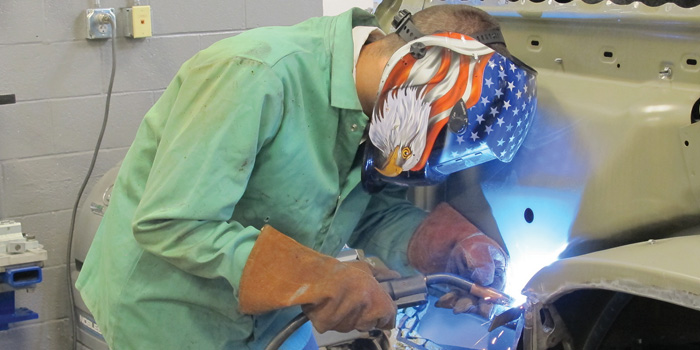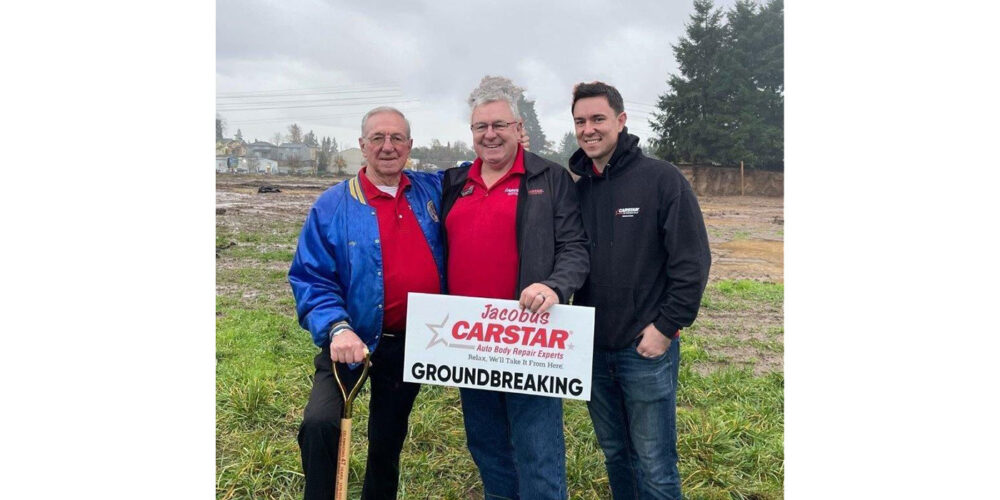In my “Health & Safety” column in the September issue of BodyShop Business, I talked about the hazards that exist in a body shop and how personal protective equipment (PPE) can reduce those risks. Most of the responsibility falls on the employer when it comes to PPE: determining the risks, conducting hazard assessments, choosing the correct PPE, training, enforcing the use of PPE and periodic assessments.
As an employee, you also share in that PPE responsibility. This includes maintaining your PPE and – most important – wearing it!
In a collision repair facility, there are some specific PPE necessities, and we’ll break those down from head to toe.
Eye and Face Protection
Some of the most important areas to protect while in the workplace are your face and eyes. Common physical hazards like moving objects, fluctuating temperatures, high-intensity lighting, debris flying through the air, faulty electrical connections, and sharp edges put your face and eyes at risk. And don’t forget about other health hazards such as harmful dusts, flammables, chemicals and radiation.
These regular shop activities make your eyes vulnerable to dust, dirt, metal or wood chips from things like chipping, sawing, hammering or grinding; objects swinging into the face, such as chains and tools; radiant energy from welding; the use of lasers; heat glare and sparks; and chemical splashes from corrosive materials, hot liquids, solvents or other harmful solutions.
When thinking about eye protection, consider these factors: protection against the risks specific to your type of work, proper fit and comfort, unrestricted vision and movement, durability and ease of cleaning, and the ability to function properly when used with other PPE.
Some types of protective eyewear include:
- Safety glasses
- Goggles
- Face shields
- Welding shields
- Laser safety goggles
Hands and Arms
Your hands are at risk for a variety of shop injuries, including absorbing harmful substances through the skin, chemical or thermal burns, bruises, abrasions and cuts, fractures and punctures, electrical dangers and even amputations.
You can minimize these risks by using PPE such as gloves, finger guards or arm coverings. There are many types of gloves available, so consider certain factors when specifying protective gloves, such as knowing what types of chemicals, if any, may be handled; the nature of the contact with the chemicals; the area requiring protection; grip requirements; thermal protection; size and comfort; and abrasion/resistance requirements.
Work gloves fall into categories based on the type of workplace hazard:
- Leather, canvas or metal mesh
- Fabric and coated fabric
- Chemical- and liquid-resistant
- Insulating rubber
Foot and Leg Protection
Your feet and legs are at risk from falling or rolling objects, materials that could crush or penetrate your feet or legs, exposure to hot substances or corrosive or poisonous materials, electrical hazards and static electricity. In these situations, you should have adequate protection for your feet and legs.
All ANSI-approved footwear has a protective toe and offers impact and compression protection; however, the amount of protection is not always the same. Common types of foot and leg protection you may come across in a body shop include:
- Safety shoes
- Toe guards
- Combination foot and shin guards
- Leggings and metatarsal guards
Body Protection
Certain types of jobs may require full-body protection to keep you safe. In particular, full-body protection may guard against cuts; radiation exposure; extreme temperatures; hot splashes; impact from tools, machinery or materials; and hazardous chemicals.
Clothing that provides body protection includes coveralls, vests, jackets, aprons, paint suits and full body suits. Protective clothing is available in a variety of materials, such as paper-like fiber; treated wool and cotton; duck; leather; and rubber products such as fabrics, neoprene and plastics.
Hearing Protection
The need for hearing protection is based on several factors, such as loudness (measured in decibels), the duration of exposure, the amount of movement between work areas of different noise levels and whether the noise is generated from one or multiple sources.
In general, the louder the noise, the shorter the exposure time before hearing protection is required. For most people, exposure to a noise level of 90dB for an eight-hour workday is the maximum allowable before hearing protection is required. When you’re exposed to occupational noise at or above 85 dB averaged over eight hours, employers are required to start a hearing conservation program. However, if the noise level at any point in the workday reaches 115 dB and lasts longer than 15 minutes, hearing protection will be required.
Types of hearing protection include single-use earplugs, preformed or molded earplugs and earmuffs.
Head Protection
Head injuries can potentially cause lifetime impairment and can even result in death. A hard hat comes to mind when thinking about a construction site, but the reality is that hard hats are an easy and practical way to protect your head from impact and penetration hazards, electrical shocks and burn hazards – all of which you can find in a body shop.
If there is a risk of an object falling from above that could strike your head, bumping your head into a fixed object such as a car on a lift or an exposed beam, or accidental contact with electrical hazards, you should be protecting yourself.
Wear It!
Now that you know about all the PPE, don’t forget to wear it. If you see a co-worker not wearing his or her PPE, encourage that person to wear it also.
(Note: Noticeably missing from this list – but a PPE requirement in a paint shop – is the respirator. We will talk about the all-important respirator in a future column.)














